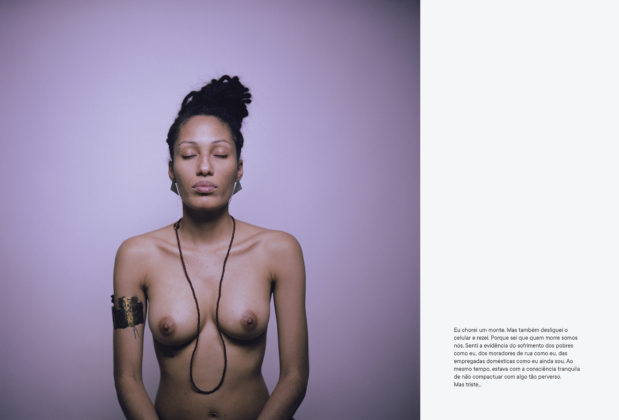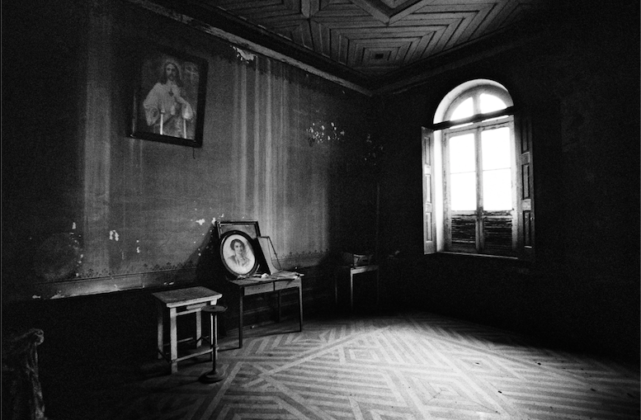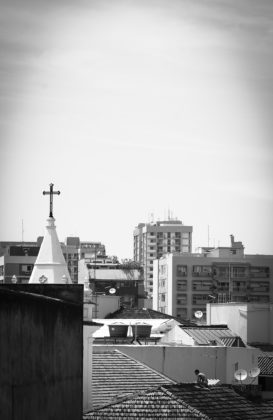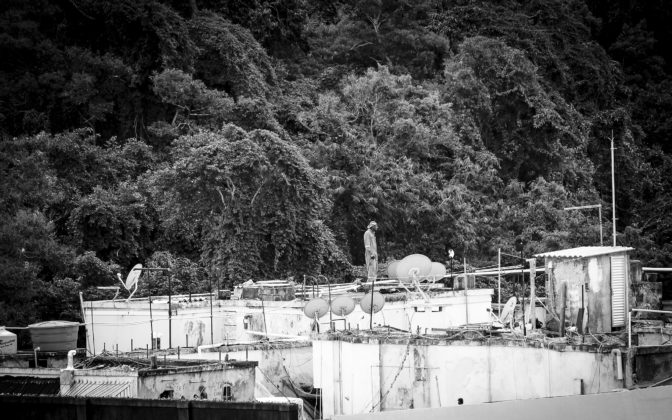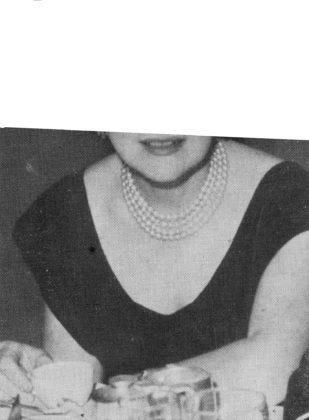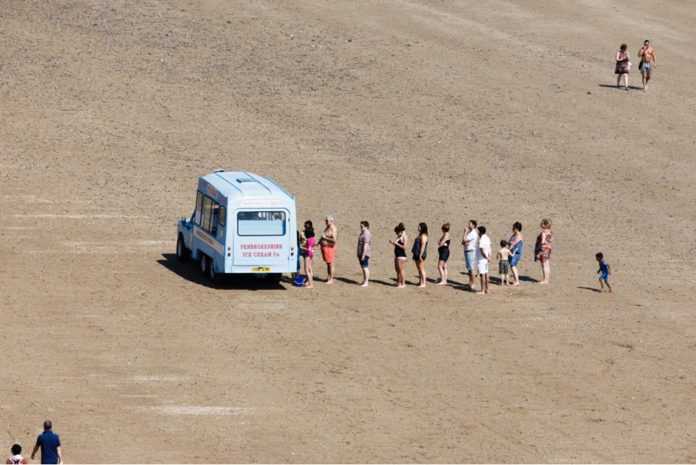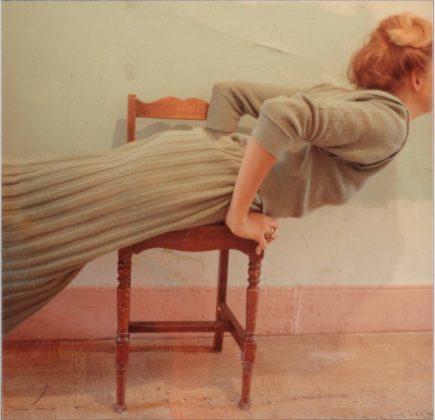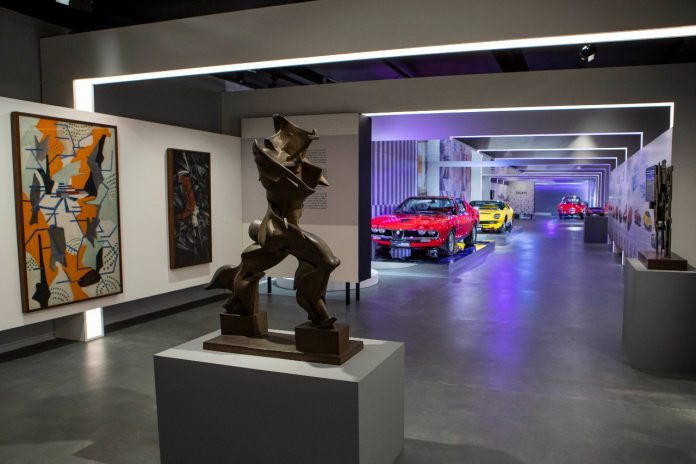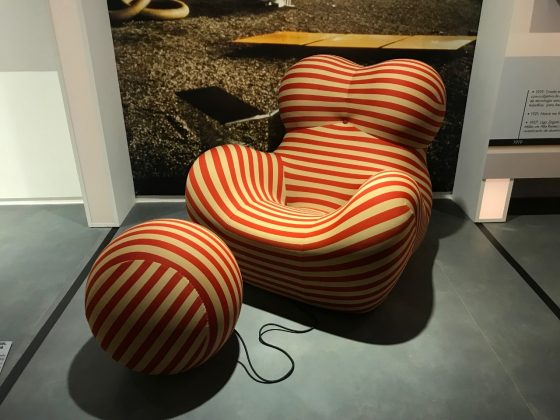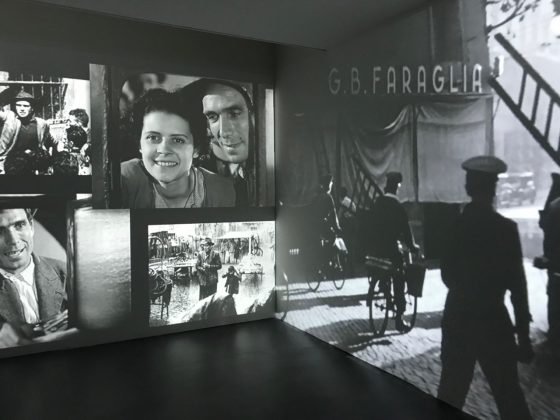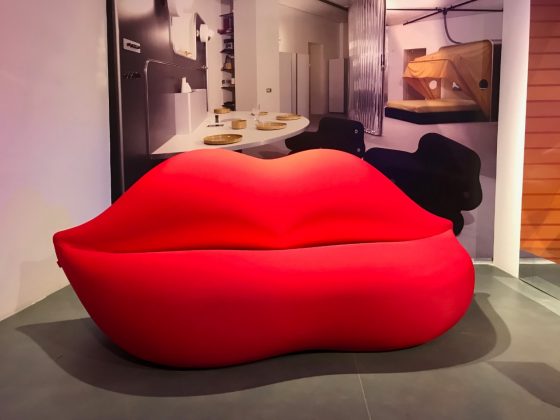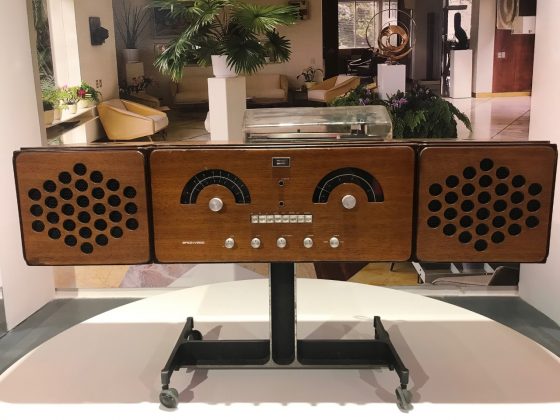Por Durval Muniz de Albuquerque Júnior*
Que imagens evoca o ouvir sertão?
No pensamento social brasileiro, na literatura e nas artes brasileiras foi e é recorrentes a indagação pelo o que é o sertão, pelo seu significado, pelas figuras que o poderiam representar. Afinal, o que se diz ao se dizer sertão? Na busca de um só sentido, na procura de uma única definição, o encontro com o diverso, com o disperso, com o divergente, o encontro com o ambíguo, com o ambivalente. Na busca de ver e de dizer o sertão, o encontro com os sertões. Na escavação incessante em busca do ser do sertão, autores e obras foram e são tragados pelo vórtice de sentido que é o enunciado sertão, rodopiam no oco de sua significação, são capturados pelo redemoinhar de sua realidade, de sua identidade. Um ser tão múltiplo, tão desconforme consigo mesmo, como dizê-lo, como expressá-lo? Mas, afinal, quais imagens, que imaginário gira em torno desse topos e desse lócus tão presentes na produção cultural brasileira? Abramos as arcas da imaginação brasileira e façamos um pequeno inventário do que se vê e do que se faz ver ao se falar em sertão.
O sertão é o outro. Alteridade, diferença. O sertão é o estranho. O sertão é o outro do litoral, da civilização, da cidade, da modernidade, da contemporaneidade. O sertão é o distante e o distinto. Aquele espaço com o qual não se tem proximidade ou identidade. É o lugar do outro,
do estranho, do selvagem, do bárbaro, do rústico, do rude, do atrasado, do dessemelhante, do bicho, do inumano. O sertão é outro e possui a infinita capacidade de outrar-se. Ele sempre se desassemelha, ele sempre se faz outro quando dele nos aproximamos. Quanto mais se espia mais ele se afigura mudado, metamorfoseado. O sertão é cobra que muda a pele todo santo dia.
O sertão nunca está aonde o procuramos e, no entanto, parece estar em toda parte. O sertão vive a condição de fronteira, ele está sempre se deslocando. O sertão sempre está mais a frente, ele é uma procura e uma espera. Estamos sempre perdendo o sertão de vista. Quando chegamos, ele já se foi, debandado. O sertão está sempre depois de acolá, depois da virada do caminho. O sertão é descaminho, é perdição, é errância. O sertão é errar, o sertão é errado. Quando chegamos às bordas do sertão, ele salta mais para adiante. Quando pensamos ter conquistado o sertão, ele se nega, caprichoso. Quando pensamos ter dominado o sertão, ele se arretira, ele foge mais para dentro.
No entanto, ele continua como uma presença obsedante, como uma interrogação a ser respondida, como um desafio a ser enfrentado, como uma meta a ser atingida. O sertão está ali, mas está aqui, está acolá. Quando pisamos o sertão ele escapole dos nossos pés, embora continue doendo em nossa alma, sendo miragem em nossos olhos.
O sertão é uma distância. Ele sempre está mais para lá do que para cá. Mas onde situá-lo? O sertão é uma distância no tempo. O sertão é anacrônico, é coisa passada, é coisa de outros tempos. O sertão pertence ao passado, é sua expressão e encarnação. O sertão é tradição, é folclore, é coisas do arco da velha, é artesanal, não industrial. O sertão se faz a mão, em pontos de cruz. O sertão está morto, o sertão é o lugar da morte por excelência e incelências. Caminhar na direção do sertão é andar na contramão do tempo1. O sertão é recuo, o sertão é ruína, o sertão é o que restou dos tempos idos. No sertão o tempo se arrasta pesado, lerdo, banzo. No sertão o tempo se espicha, se espreguiça, sonolento. O tempo do sertão é pegajoso, é como visgo, aprisionando a todos em sua marcha modorrenta.2 Por isso, para se ver o sertão é preciso tomar distância, é preciso olhar para os tempos antigos, anteriores, ancestrais. Só se vê o sertão com os olhos da memória ou da história, pois o sertão sempre ficou para trás. O sertão é uma medida de tempo, ele permite medir a distância em que nos encontramos dos tempos das origens, dos tempos primevos, primitivos. O sertão é princípio, é primordial, é armorial.3
O sertão é uma lonjura. Espaço remoto, lugar distante, brenhas, matagais, matorrais. O sertão são léguas tiranas.4 O sertão é a perder de vista. Horizontes abertos, terras infindas, espaço por conquistar, por palmilhar, por desvendar os segredos e mistérios. O sertão é um apelo ao deslocamento, é um convite ao nomadismo. O sertão é terra sem porteiras, portas sem tramelas. O sertão é um sumidouro de gentes. Espaço de encantamento e desaparição. O sertão é de levas de gente e de bichos. O sertão é terras de tocadas, de tocas e de tocaias.5 É mufumbo, é matagal, é carrascal, é os cafundós do Judas, onde ele perdeu as botas. O sertão é além, é paraíso e é inferno. O sertão é o que está para dentro, é o que está por dentro de cada um de nós. O sertão é tão distante, o sertão é tão perto. Agente sempre sai do sertão, mas o sertão sai da gente? O sertão é maria-vai-com-as-outras, nos segue e nos persegue aonde vamos. Ele nos habita e habita todos os lugares onde estamos. Quando menos se espera o sertão vem, se estatela bem no meio da rua, bem no meio da praça, na forma de uma mão em forma de arminha. O sertão revolve e revólver, balas e armas como solução. O sertão, espaço do qual sempre procuramos nos distanciar, mas que teima em viver entre agente.
O sertão paisagem sem figuras.6 Sertão, deserto, desertão. Ser desertado, ser sem rosto, ser de areia e vento. Ser redemoinho, ser diabólico, ser dividido e conflituoso. Ser disperso, ser em profusão e proliferação. O ser do sertão é barroco, dobrado, plissado, chamalotado, pintalgado, ser complexo e em profusão. O sertão é onça malhada, é onça cinzenta, confunde os olhos de qualquer cristão. O sertão é miragem, é imagem ilusória e delirante. O sertão dói nos olhos. Pletora da luz, do vermelho, do cinza. Sertão onde o verde é mancha, e o seco é sina. Sertão que pinta tudo de amarelo, de ocre, do pó que esvoaça na cremalheira do verão. Sertão de homens e poentes vermelhos como fogo. O sertão é uma estética do pobre, do pouco, do menos, do sujo, do feio, do mínimo, do mirrado, do esquelético, da míngua, do seco, do cinza, da condição caatinga, da morte e vidas severinas.7 O sertão é a poesia da pedra, é a melancolia da perda. É a estética da fome, da violência, do desespero, do lamento, da lamúria, da ladainha, da medalhinha, do medalhão, do meganha e da meretriz, do coronel e do jagunço.8 O sertão do cabra marcado para morrer9 e dos Antônios das mortes10, do cangaceiro e do beato, do padrinho e do apadrinhado. O sertão do cabra macho e dos homens trabalhadores. O sertão é só osso, não requer retóricas grandiloquentes, mas palavras roídas, palavras ruminadas, doloridas como pedras entre os dentes. O sertão resseca qualquer derramamento verboso. Mas por que continuamos roendo os ossos do sertão sem nunca conseguirmos atinar com seu sabor? Por que tanta baba derramada das salivações em torno do ser do sertão? O sertão é para deleites ou não?
O sertão é uma saudade. O sertão é uma ausência, no tempo e no espaço. O sertão é partida e desejo de volta. O sertão é até logo e nunca mais. O sertão é uma dor, é uma lágrima pungente. O sertão é sons, é cheiros, é sabores perdidos e reencontrados, reencantados, recontados, recatados, refeitos, retirados, exilados. O sertão entra por todos os sentidos, atiça aqueles mais afeitos às reminiscências, às lembranças. O sertão é uma pele da qual se precisa dolorosamente se despir. O sertão é um gesto, o sertão é um jeito, o sertão é um trejeito, o sertão é um verbo, o sertão é um dito e feito. O sertão entra por todos os buracos da cabeça e do corpo. O sertão nos deixa de mansinho quando menos percebemos. O sertão se desprega, desapega, se sonega e se renega nas dobras de nosso corpo. O sertão é uma roupa velha que não serve mais, mas é enfeite e deleite para nossas pérolas literárias e musicais. O sertão é ruim para viver, mas é bom para reviver em telas e pedestais, em discursos e concursos. O sertão é um armazém de sentidos, um caldeirão de signos, um arquivo de cenas e personagens, um baú da felicidade artística e intelectual. O sertão é uma ausência que se faz presença permanente e premente.
O sertão é a nossa reserva de imaginação, por ser esse outro, esse fora, esse distante, no tempo e no espaço; por ser esse estranho, esse estrangeiro; por ser esse deserto; por ser esse espaço devastado e aberto onde se pode tudo construir, tudo arquitetar, tudo figurar; por ser esse espaço de viagens, de visagens e nomadismos; por ser essa terra desterritorializada, que pode ser levada para qualquer lugar, porque ela viaja dentro de cada um que se diz e se pensa sertanejo. O sertão agente leva na mala, leva na fala, leva na alma, lava de lágrimas em cada obra que, a partir dele, se escreve, se cria, se compõe, se pinta, se retrata, se formata, se contrata e se maltrata. O sertão continua funcionando na cultura brasileira como essa grande interrogação, como essa grande pergunta, essa momentosa questão, como essa enorme angústia em torno do ser, que um dia levou Rosa a perseguir o ser do sertão ou o ser no sertão por estradas e veredas sem fim.11 Se o sertão é as terras do sem fim12, essa inquirição nunca cessará, será infinita e infinda como ele. De vez em quando poderemos olhar para trás e inventariar o que se disse sobre ele, mas isso só fará reabrir a fome e a sede de dizê-lo, só alimentará a carência de sentido, só incentivará ao contínuo escavar desse oco dos tempos e dos espaços que são os sertões: plurais, diversos, imensos, esse oco dos sentidos em que em cada um se abisma ao se debruçar sobre as bordas do sertão e tentar mirá-lo nos olhos e no rosto. O sertão sempre escapa e, por isso, a busca nunca cessa. O sertão é como a vida humana, carente de sentidos, mas, ao mesmo tempo, inundado de todas as possibilidades de sentido, inclusive do sentido nenhum, aberto para o nada, disposto a ser o nada.
1 Assim pensava Euclides da Cunha. CUNHA, Euclides. Os Sertões: campanha de Canudos. 30ª ed. Rio de Janeiro: Francisco Alves, 1981.
2 O tempo do sertão é assim descrito por Raimundo Carrero. CARRERO, Raimundo. Romance do bordado e da pantera negra. São Paulo: Iluminuras, 2014.
3 O sertão é armorial, cheio de brasões, símbolos e assinalações na obra de Ariano Suassuna. SUASSUNA, Ariano. Romance da Pedra do Reino e o Príncipe do Sangue do Vai-e-Volta. Rio de Janeiro: José Olympio, 1972.
4 Na voz e na música de Luiz Gonzaga. Légua tirana (Luiz Gonzaga e Humberto Teixeira), 1949 (RCA Victor).
5 Esse é o sertão de Jorge Amado. AMADO, Jorge. Tocaia grande: a face obscura. São Paulo: Record, 1984.
6 O sertão do poeta João Cabral de Melo Neto. MELO NETO, João Cabral de. Paisagem com figuras. In: Poesias Completas (1940-1965). Rio de Janeiro: Sabiá, 1968, p. 245-272.
7 Referência a MELO NETO, João Cabral de. Morte e Vida Severina. In: Op. Cit., p. 203-244.
8 Referência a ROCHA, Glauber. Eztetyka da Fome (1965). http://www.tempoglauber.com.br/t_estetica.html. Acesso em 30 de maio de 2019.
9 Referência ao documentário de Eduardo Coutinho, Cabra Marcado para Morrer, 1984.
10 Referência ao personagem dos filmes de Glauber Rocha, Deus e o Diabo na Terra do Sol (1964) e O Dragão da Maldade contra o Santo Guerreiro (1969).
11 ROSA, Guimarães. Grande Sertão: veredas. 15ª ed. Rio de Janeiro: José Olympio, 1982.
12 Referência a AMADO, Jorge. Terras do sem fim. São Paulo: Record, 1981.
*Durval Muniz de Albuquerque Júnior é doutor em história, professor da Universidade Estadual da Paraíba. Escreveu o livro A Invenção do Nordeste e Outras Artes, 1999, Cortez Editora.
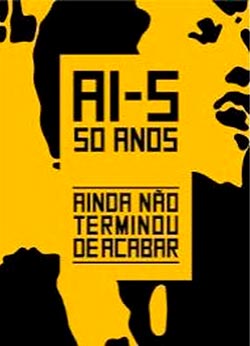 AI-5 50 ANOS: ainda não terminou de acabar
AI-5 50 ANOS: ainda não terminou de acabar




